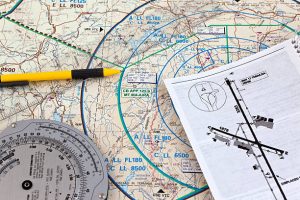SURVEYING: Definition, Meaning & Types
 |
| Surveying | Image credit: Autodesk.com |
Surveying is the determination of the relative spatial location of points on or near the surface of the earth. It is the art of measuring horizontal and vertical distances between objects or measuring angles between lines, or determining the direction of lines, and the establishment of points by predetermined angular and linear measurements.
In tandem with the actual measurements of surveying are mathematical calculations. Distance, angles, directions, elevations, areas, and volumes are thus determined from data of the survey. Similarly, much of the information of the survey is portrayed graphically by the construction of maps, profiles, diagrams and cross sections.
Equipment available and methods applicable for measurement and calculation have changed tremendously in the past two decades. Remote Sensing, Aerial Photogrammetry, Satellite Observations, Inertial Surveying, Electronic Distance Measurement, and Global Positioning System are examples of modern systems utilized for collecting vitally usable data for a survey process.
The relative access to electronic computers of all sizes facilitates the rigorous processing and storage of large volumes of data.
With the development of these modern data acquisition and processing systems, the duties of the surveyor have expanded beyond the traditional tasks of the fieldwork of taking measurements and the office work of computation and drawing. Surveying is required not only for mapping, conventional construction engineering projects, and property surveys, but is also used by other physical sciences like wildlife, oceanography, hydrology, wildlife, geography, including human and cultural resources.
The tasks in these physical science operation need to be redefined to include design of the surveying procedure and selection of equipment appropriate for the project data acquisition in the field or by way of remote stations; reduction or analysis of data in the office or in the field storage of data in a form that is compatible with future retrieval, preparation of maps or other displays in the graphical (including photographic) or numerical form needed for the purpose of the survey, and setting monument and boundaries in the field as well as control for construction layouts.
Performance of these tasks requires familiarity with the knowledge and use of surveying and its fundamentals, and a knowledge of the various means by which data can be prepared for presentation.





